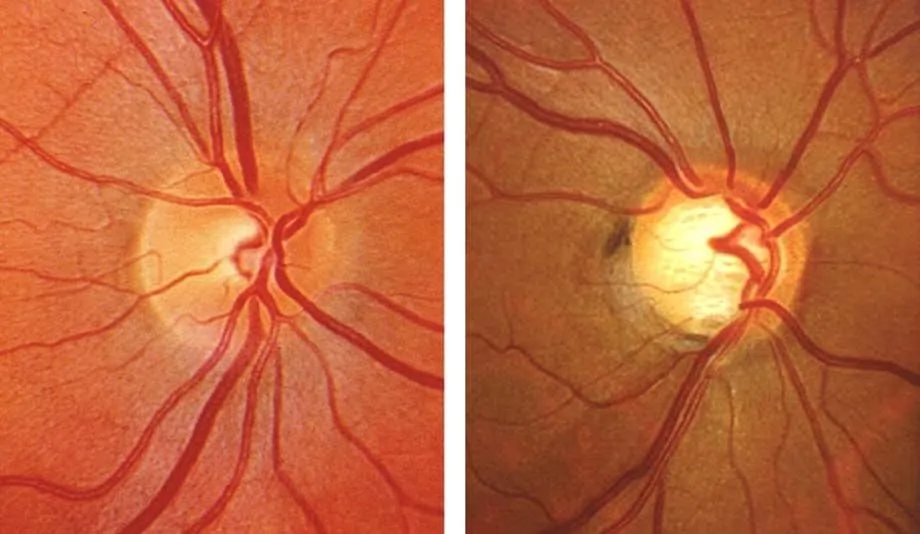Increased eye pressure, also known as intraocular pressure, can cause damage to the optic nerve. The optic nerve is responsible for transmitting images to the brain. This increased intraocular pressure is called glaucoma. It is a very serious disease of the eye that without treatment, can result in permanent vision loss.
Healthy Optic Nerve Optic Nerve with Glaucoma
The Two Main Types of Glaucoma
There are two types of glaucoma. These include:
- Open-angle glaucoma: This is the most common type of glaucoma. It occurs when the drainage structure in the eye doesn't allow the fluid to flow as it should. This results in increased pressure in the eye.
- Angle-closure glaucoma: This type of glaucoma is less common than open-angle glaucoma. It occurs when the drain space between the cornea and the iris becomes too narrow. This causes a sudden buildup of pressure in the eye.
Who Is at Risk for Glaucoma?
While anyone can develop glaucoma, certain factors put you at higher risk.
- People who are African-American, Russian, Irish, Japanese, Inuit, Hispanic, or Scandinavian are more likely to develop glaucoma.
- People over the age of 40 are at greater risk.
- A family history of glaucoma
- Having a powerful refractive error
- Diabetics
- Frequent use of steroid medications
- Previous eye trauma
What Are the Symptoms of Glaucoma?
In the early stages, there are no symptoms of open-angle glaucoma. The first sign doesn't occur until the later stages, and you will experience a loss of your peripheral vision.
The symptoms of angle-closure glaucoma come on very suddenly. This type of glaucoma can cause severe eye pain, vision loss, nausea, and vomiting, seeing halos around lights, and redness of the eye. This type could also cause tunnel vision.
How Is Glaucoma Diagnosed?
Glaucoma can be detected during a comprehensive eye exam. If your eye doctor finds that your intraocular pressure is high, they will dilate your eyes to check the condition of your optic nerve. If there is damage to your optic nerve, your optometrist will take photos of your optic nerve to track your condition. A visual field test and OCT will also be performed to determine the extent of damage to the optic nerve.
How Is Glaucoma Treated?
There is no cure for glaucoma. There are treatment methods available that can slow the progression of the disease. The most common treatment is eye drops to keep the pressure in your eyes down. In more advanced cases, laser surgery can help to increase the flow of fluid. Finally, a surgical procedure called trabeculectomy can be performed to create a new channel for the fluid to drain.


